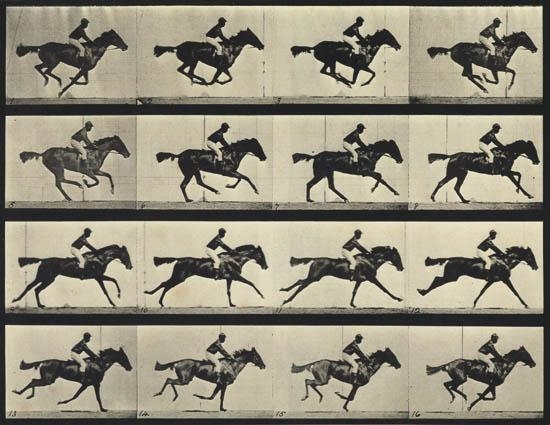31 September, 2018
Eadweard Muybridge and Moving Pictures
In the world, humanity’s first and most primitive concept of film derived from the innovative experimentation by the photographer Eadweard Muybridge. Muybridge theorized that when a horse runs, both its hind legs and front legs are in the air and off the ground. In order to prove this theory Muybridge aligned twenty-four linear cameras and timed the early cameras to each take a photo, one almost immediately after the other, in sequence as a horse galloped in the line of the shots. As a result, the horse was captured in motion by the twenty-four frames that, when in quick succession of each other, create the illusion of a travelling figure through pictures. This invention was revolutionary in the art world and in human culture. Parallel to the development of quick pictures, humanity’s span of entertainment (or attention) became very quick.
Although, it took some time at first, the primitive development of motion picture by Muybridge launched the ascending popularity of film in entertainment and art to the point of taking over the traditional entertainment of live plays. This new stimulus became vastly more appealing to the masses and began the generational shift of people’s preference for immediate satisfaction. As a result, almost instant gratification has become much more pronounced, evident in today’s social media. Despite the dramatic development of film in the following years, there is evidence of the original framing of moving pictures in modern forms, especially in projects such as stop-motion animation and social media gifs. In addition, not only did the innovative quick succession of frames to convey an illusion inspire following film, it also inspired two-dimensional artwork in the era.

Nude Descending a Staircase the 1912 painting by Marcel Duchamp is a vital representation of the artwork that followed the inspiration of Muybridge’s inventiveness. Not only is the piece revolutionary for it time in its abstract depiction of the human body, but it uses repetitive lines and shapes to portray movement on a flat surface. This technique developed by Muybridge was pioneering because it transcended more than one art form and modified the perceptive taste of much of humanity.
